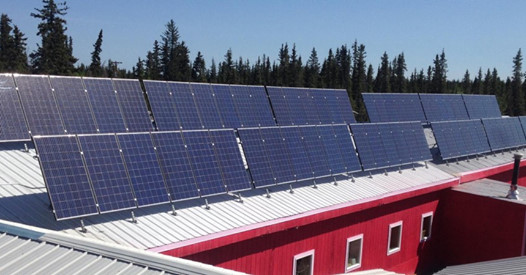E2’s latest Clean Jobs America report states that in 2018 3.26 million Americans were employed by the clean energy economy with an expected growth rate to be 6 percent at the end of this year. Those are huge numbers nationally and are making even bigger impacts at state and local levels. The transition to clean energy continues to build the new American workforce, despite Trump administration’s tariffs on solar panels and market uncertainty from the administration’s inaction and planned rollbacks of energy efficiency and clean vehicle policies. Clean energy jobs now employ more Americans than the fossil fuel industry, three to one, with 3.26 million in clean energy and 1.7 million in fossil fuels. The work includes a wide range of well-paying jobs, including installing solar panels, energy efficiency upgrades, developing electric vehicles and infrastructure, and more.
A demonstration of the growing clean energy sector is happening on October 5th and 6th with The National Solar Tour. The National Solar Tour is highlighting solar installations, projects, and programs across the nation to demonstrate the popularity and increasing demand for clean energy alternatives. All 50 states are participating in this demonstration with over 800 individuals, businesses, and governments hosting tours of solar installations. With every installation, there are engineers, electricians, equipment manufacturers, system designers, salespeople, and field installers that were employed. As solar grows, so does solar employment. These 800 new installations created thousands of good-paying jobs for Americans. In 2018, 242,000 out of 3.26 million clean energy jobs in the solar industry, making the industry the third top employer in clean energy.
Even though Alaska is high latitude and has long winter nights, solar energy can play a large role in grid-tied and off-grid power production. Alaska’s long summer days and sunshine available in the shoulder seasons make solar power an abundant resource for the state. The amount of sun Alaska gets is comparable to Germany, the leading country for solar. But even with the abundance of solar Alaska ranks 50th out of the states for a total installed solar capacity. According to the Solar Foundation, we have a cumulative installed solar capacity of 4 MW and only 0.04% of the state’s electricity is generated from solar. The solar industry is still in its infancy in Alaska and there is a lot of growth and opportunity to be had in the future. The abundance of solar energy and the inevitable transition to a clean energy economy will power the new Alaskan workforce.
With growing fiscal uncertainty and a rash state-level Administration, Alaskans are looking to new avenues for economic growth. Local governments and community members alike are taking initiative to advance our clean energy economy and investing in solar energy.
In October of 2018, Alaska’s largest solar farm came online, a nearly 1,800-solar panel, a 563-kilowatt project located south of Fairbanks with Golden Valley Electric Association.
Solarize Anchorage, a program of The Alaska Center, has helped the local solar industry grow by facilitating 200 home installations in the Municipality in 2018 and 2019. Solarize Anchorage is a bulk purchasing program where neighborhoods purchase solar in bulk in to receive a volume discount. This program is driven by community members and has supported three solar companies to install solar in five different communities across the Anchorage Bowl. 10 Alaskans were directly hired to meet the demand from the Solarize program. The program is expected to continue in 2020 in Anchorage and expand to Fairbanks for the first time.
In 2018, the first community-owned solar farm was connected to the grid in Willow. This project has 408 solar panels on-site and produces enough power for 25–30 homes and offsets 6 million pounds of C02. The private owners of this solar farm sell power back to Matanuska Electric Association at wholesale value. In 2019, the private owners of this solar farm are significantly expanding the project to occupy 10 acres and include 3,240 panels. It will be the largest solar farm in the state, and the only privately owned farm.
Local leaders across Alaska have also made strides to advance the transition to clean energy through local climate action plans, supportive policies, and investments. The Anchorage Assembly recently passed a Climate Action Plan that supports local job creation and millions of dollars in savings through renewable energy projects, energy efficiency upgrades, and more. The plan aims to address barriers to investing in solar. The plan also includes transportation improvements for bike and pedestrian infrastructure and public transportation. The Municipality of Anchorage is working with electric utilities to develop a regional electric vehicle charging plan to support smart charging infrastructure. These renewable energy upgrades and improvements will create good-paying, clean energy opportunities for Alaskans in the transportation sector.
The path to a clean energy future should be guided by leadership at the local, state, and federal levels. Rather than wait for coherent climate policy from the Federal government, and rather than enduring the climate change denialism that can paralyze state governments, Alaskans are moving forward independently, and bravely, and proving that renewable energy can and will work in Alaska. Alaskans are building a clean energy future one solar panel at a time, proving to local, state, and federal leaders that the future, with or without them, is moving toward decarbonization and electrification.
By Kristen Collins - The Alaska Center
Share this Post

